If you want further proof of how different California is, watch a Notre Dame football game on TV this month. I'm not talking about the more exciting way California teams play the game but about the fall scenes on Notre Dame's Indiana campus — gorgeous with brilliant autumn color early in the month, then leafless and bare by Halloween (and for the next five months).
Maybe I'm being provincial? October in Northern California instead provides us with roses blooming again, tomatoes and summer flowers such as zinnias still going strong, touches of fall color and enough warm weather to make this one of the year's best times for planting.
You may notice that our fall color seems early this year. I'm not a botanist (unless you count sleeping through Botany 10 at Berkeley decades ago) but I think that the shift in timing has to do with a dry 2012, not cold temperatures or anything else. That's a good reminder for the future: Encourage fall-color trees by holding back a bit on watering them in late summer.
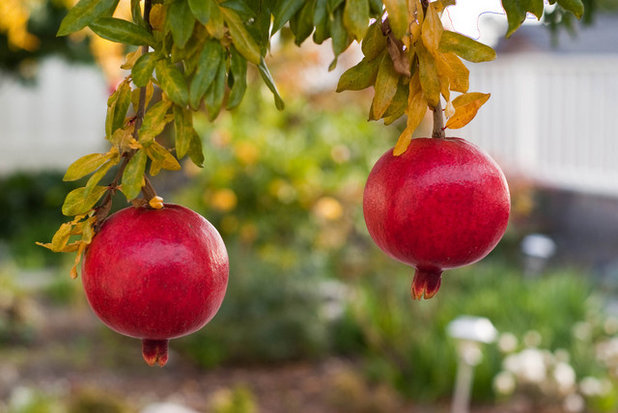 Plant something besides pots of chrysanthemums.
Plant something besides pots of chrysanthemums. Nothing wrong with festooning a garden with pots of blooming chrysanthemums, but they lost much of their strong seasonal identity when Safeway began selling them every day of the year. Instead, why not pot a few plants that suggest the season in their own way — and can become lasting showpieces in your garden? I'm thinking of some permanent shrubs and trees that are small enough to thrive in a pot for a few years.
Pomegranates symbolize fall in Mediterannean climates. Like early Christmas ornaments, the fat, round red fruits hang heavy on spindly branches along with small leaves turning an autumn yellow. For a container, look for a dwarf variety such as 'Nana', displaying fall foliage and tiny red fruits if you're lucky.
Photo courtesy of Frank Chan
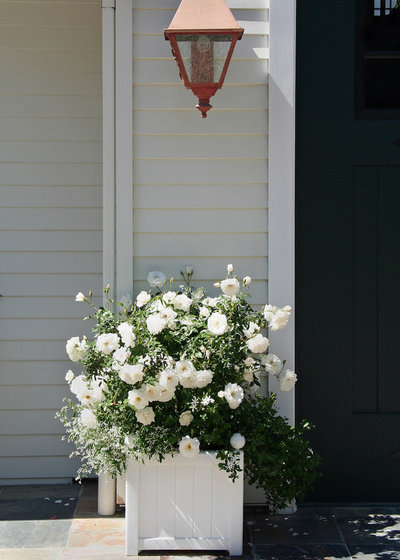
Donna Lynn - Landscape Designer
Choose a container rose. Many roses have a strong fall season. 'Iceberg', shown here, is strong all year and does well in a pot. Other good choices for containers include low, compact types, such as 'Flower Carpet Appleblossom' (pink) and 'Caramba' (red).
Also, see what's blooming or showing fall color at your local nursery. Among the container candidates are
kumquat, dwarf nandina, Japanese maple and
sasanqua camellias. You'll need a pot measuring 2 inches taller and wider than the plant's root ball. Use nursery potting mix unless you have your own.
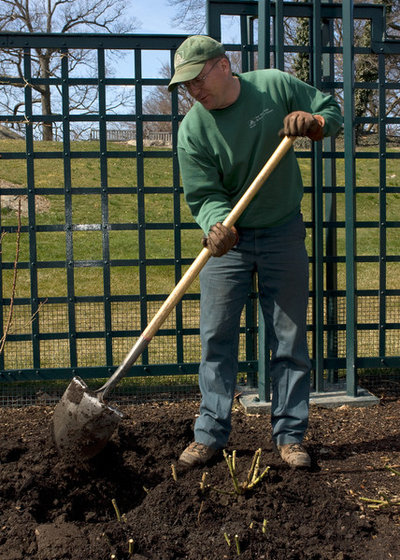
The New York Botanical Garden
Prepare soil for planting. When I began working at
Sunset magazine, one fall years ago, my first job was pushing wheelbarrow after wheelbarrow full of composted ground bark and dumping it on beds being prepared for planting.
Not really understanding why, I just did what the head gardener told me. He was a rough-hewn, cigar-chomping, plain-talking, lovely guy who had learned his trade tending country estates in Woodside, California, for elite San Francisco coffee-making families.
His precise and measured techniques were based on traditional English methods, and they worked, judging by Sunset's lavish spring beds in those days. I’m guessing that the folks at Filoli Mansion and Gardens in Woodside prepare their magnificent beds the same way.
The lost art of digging a planting bed:• Pull or dig out flowers and weeds.
• Make sure that the soil's moisture level is right; the soil should be moist but not drippy with water when squeezed.
• Use a spade, spading fork or tiller to turn over the whole bed to the depth of a spade. Break up clods as you go.
• Smooth the surface with an iron rake. Then pile on the organic matter (ground bark, compost etc.) to a depth of at least 2 or 3 inches — the amount needed still surprises me.
• Sprinkle on slow-release food or whatever fertilizer your local nursery recommends.
• Work all this in with a spade or another tool to a depth of 6 or 8 inches. Rake the whole bed smooth again. It's ready for planting!
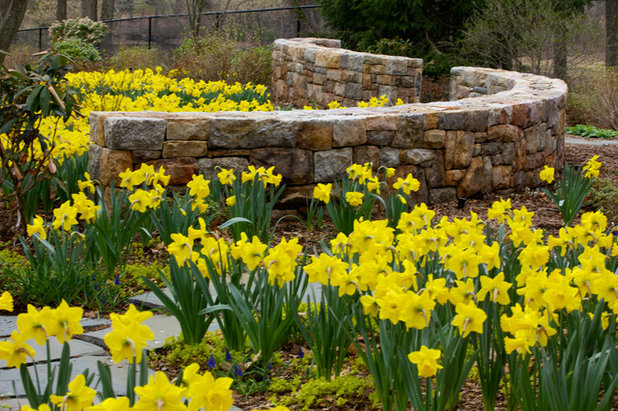
The Todd Group
Bulbs for California. If you've seen the spring show at Daffodil Hill in the Gold Country, you know that fall-planted bulbs make themselves right at home in California. Some bulbs, that is. Others struggle with our mild winters or other climate quirks, and they need special care to perform well.
Daffodils are easy and will naturalize, coming back year after year if left in the ground, as long as you let them go dry in the summer. But traditional tulips and hyacinths are challenging. They are great one-season performers, especially in pots; just plan to throw away the bulbs after one bloom. Bulbs native to South Africa, which has a climate much like California’s, thrive here:
freesia, montbretia, watsonia. Muscari and
galanthus are also winners.
Here are a few bulb planting guidelines to keep in mind: Order or buy early but plant late — next month is OK for planting. Compensate for our lack of winter chill by keeping tulip and hyacinth bulbs in a paper bag in the refrigerator for six weeks or so. Because of our warm fall weather and warm soil, planting too deep is better than too shallow — 6 inches for daffodil bulbs is fine. Bulbs look best in multitudes — 50 or even 100 in the ground, if your budget allows, or a couple dozen in containers.
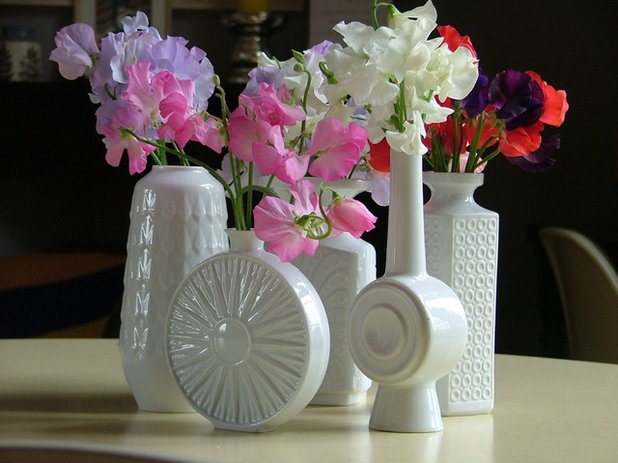
Kaylovesvintage
Peas, sweet and other. Few plants are as satisfying to grow as sweet peas (for their fragrant blooms) and their cousins the edible peas (for their garden-fresh sweetness).
I don't consider any of them easy to grow, and they are as persnickety as any plant about their proper planting time — they need to bloom or ripen in the cool weather of early spring, unless you live in a permanently, delightfully cool place llke Half Moon Bay, where it's always pea-picking time.
One grower in the Santa Clara Valley told me the optimum planting date is October 26, which leads to picking time on St. Patrick's Day and an end of the season around Mother's Day.
In most of Northern California, anytime this month should be fine for sowing seeds or setting out small seedlings. Make sure you plant in full sun, or else you invite mildew.
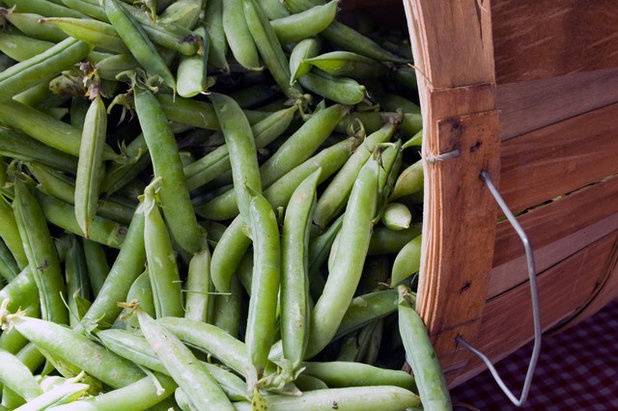
The New York Botanical Garden
For both flowering and edible peas, there are climbing and bushy types. Dwarf types require little or no staking or clinging devices and are easier to deal with than climbers.
Dwarf sweet peas include Bijou, Knee-Hi and others, growing from 8 inches to 3 feet tall; these do especially well in containers — move them where you can sniff the fragrance. There are many edible peas from which to choose, either shelling (English) or edible-pod types, such as sugar peas. One almost-sure way to get kids interested in eating vegetables: Let them pick 'Sugar Snap' peas crunchy fresh from the vine.
More on growing peas
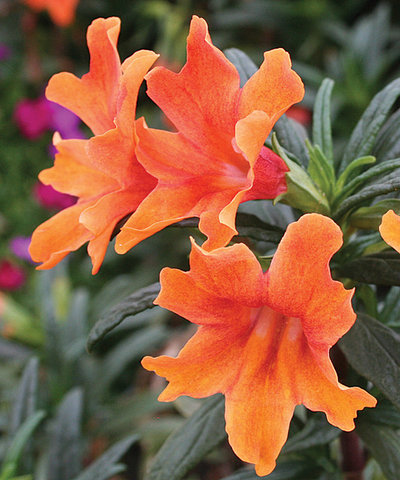 When did monkey flowers clean up their act?
When did monkey flowers clean up their act? Before a recent trip to Home Depot, the last time I had seen monkey flower
(Mimulus aurantiacus), it was kind of a scruffy, sprawly low shrub determined to bloom almost all year in the driest foothills around California.
The Home Depot mimulus, named ‘Georgie Yellow’, was compact, with glossy green leaves and bright yellow blooms. It’s a hybrid, the result of decades of dedicated breeding at UCLA, UC Davis and elsewhere — including England, where botanists, enchanted with California’s native flora, took home several species of mimulus in the 18th century.
Check out garden centers for a number of mimulus hybrids, probably still blooming this month. There are other Georgies available in orange, red and white, as well as another series called Curious — such as the Curious Orange, shown.
About the naming: The "monkey" comes from the resemblance of the flower to a broadly smiling monkey (maybe you had to be there), which must have led to variations on the theme of Curious George.
The hybrids make outstanding garden plants and are easy to grow, blooming much of the year. Most grow compactly, about 2 feet tall. Use them in borders or on a hillside, mixed in for spots of color among rosemary, lavender and other plants that need sun and little water. Planted now, they should bloom even more profusely starting next spring.
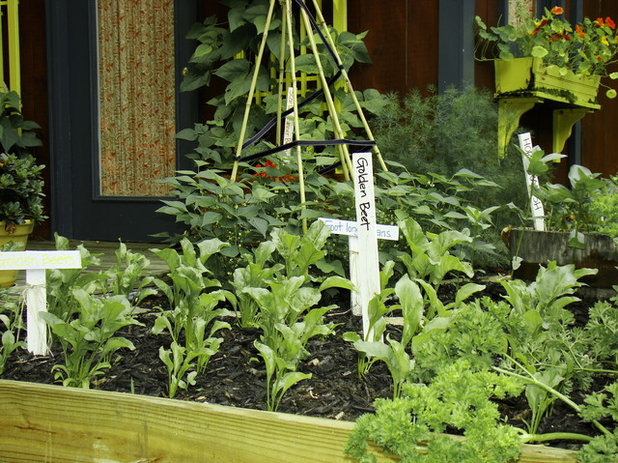
Robin Amorello, CKD CAPS - Atmoscaper Design
What else to do in October? It's easy to become obsessed with leaf raking and other fall chores right in front of you. But remember what a great planting time this is.
Plant cool-season vegetables. Most fall–spring crops need well-prepared soil in full sun. These are easy to grow from seeds sown directly in the ground: chard, carrots and radishes. These are easier to start from nursery seedlings: broccoli, cabbage and cauliflower. Watch for snails and slugs as the weather dampens.
Plant cool-season flowers. It's best to get them in the ground soon — which might give you blooms by Christmas. Almost all cool-season annuals prefer full sun; you may have to protect them from late hot spells. Most reliable are calendulas, Iceland poppies, pansies and violas.
Plant natives. This is the ideal season for planting California natives. To locate hard-to-find species, visit a sale put on by a local branch of the California Native Plant Society. Volunteers have grown the plants and help sell them. Check here for locations
Much more to plant: Lawns (sod or seeds), perennials for spring blooms, and most shrubs and trees except frost-tender tropicals.
Boost roses. You may be able to squeeze out one more bloom from roses this year. Cut off faded flowers, fertilize the soil with rose food and water deeply. Hold off the main pruning until after New Year's.
Keep watering. Unless early rains surprise us, just about everything will continue to need irrigation. Check for moisture to be sure. Use a trowel or shovel to see what the top 2 or 3 inches of soil are like. Don't forget your lawn.
Fertilize. Give lawns a fall feeding if you haven't already. Look for yellow signs of iron deficiency on citrus leaves; supply a shot of special citrus food containing iron if necessary.





